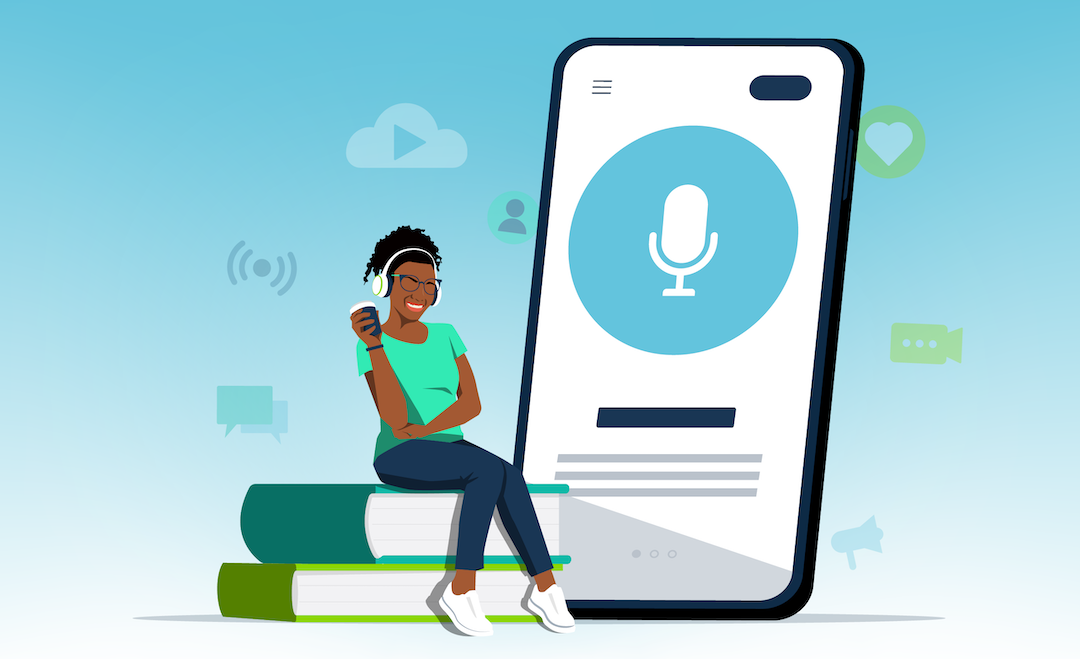 COVID-19 has turned ‘business as usual’ into an alien concept. The brakes have been applied to the global economy. Each new day seems to bring with it new challenges, setbacks and financial burdens. But all is not lost. We’ll get through this crisis together by adapting and growing. To help support you in this quest, we’ve prepared six actionable crisis tips for learning professionals such as yourself to help you overcome the challenges that lie in wait.
COVID-19 has turned ‘business as usual’ into an alien concept. The brakes have been applied to the global economy. Each new day seems to bring with it new challenges, setbacks and financial burdens. But all is not lost. We’ll get through this crisis together by adapting and growing. To help support you in this quest, we’ve prepared six actionable crisis tips for learning professionals such as yourself to help you overcome the challenges that lie in wait.
L&D professionals are typically seen as the focal point for knowledge, advice and best practice within an organisation. This is a difficult position to be in during times of uncertainty and apprehension. If this is your responsibility, you may well be feeling overwhelmed and overworked. But, there are specific, actionable things that you can do to support your teams, ride out the storm and start planning for the future.
1. Make Your Training More Flexible & Accessible
During times of great change, training needs multiply quickly. Assessing and addressing these needs will take up a significant amount of your time. But you’ll also need to simultaneously evaluate the medium and modality of your training content. As John Leh, the CEO and Lead Analyst at Talented Learning, notes, the time’s right for a refocus:
“With your employees and customers now working from home, every L&D professional in the world has an updated mission. Their goal now is to reduce their instructor-led training exposure and create a plan to migrate to virtual live and self-paced online content immediately.”
If you haven’t already, then we recommend conducting an audit of your entire learning output. You should look to identify learning and development programs that can be digitised or facilitated remotely.
Given the situation, think about the best ways to deliver value in line with your specific training needs. Whether it’s individual online courses, course libraries, tutorial videos, web conferences, one-to-one mentoring sessions or so on, you still have plenty of options in your training toolkit.
As Yon Sugiharto and Karina Julius put it in a recent ATD article, “the goal should be to provide a comparable learning experience.” You’ll just need to do so “through a new learning delivery model instead of trying to aim for the same learning experience by jerry-rigging online media”.
You’ll then need to prioritise your output accordingly. Use the appropriate matrixes to determine the order based on clear criteria. Plot the approach clearly and ensure you have a project plan in place.
Where you can, work at pace to address needs, but don’t get a reputation for doing things in a hasty fashion. Use third-party resources to meet needs where necessary, even if this is just a temporary measure.
As your digitisation process expands in scope, don’t forget to focus on accessibility. You should ensure there is a repository for everything you’ve created. It should always be easy for the right people to get access to content that is relevant to them.
This is the purpose a typical learning management system would serve. But don’t stop there. Think about how you can make this learning environment fun and exciting, to encourage your learners to keep coming back for more.
2. Adopt a Digital Mindset
Some instructional skills transfer neatly from the classroom into the online sphere. But you will also need to pick up some digital instructional design skills. This includes an understanding of key learning models, consideration for learning theory and an appreciation for visual design. It’s also useful to have experience of learning technology solutions, but this is something you can pick up over time.
When designing learning experiences for a digital context, try to lean on what we know about the way the brain works. The world may be changing at a rapid pace, but learning best practice remains the same.
Think about where your online training content falls within Bloom’s Taxonomy. Ensure your training programs are built with The Forgetting Curve in mind (and thereby utilise spaced repetition). Try to build motivation by meeting the psychological needs suggested by Self-Determination Theory and transform this motivation into habit by using The Hook Model.
Think about the way your learners will access your content. Would a microlearning approach be best to capture their attention?
This might seem like a lot, but you don’t have to nail it all at once. Do what you can with the resources you have and ensure you spend time researching different options and optimising your approach. If you feel overwhelmed, then simply try to focus on creating online learning experiences that are fun and engaging.
There are also a lot of resources out there that can help. Here’s a good place to start.
3. Open Channels of Communication
Good communication has always been key to business success. When facing an existential threat, this becomes even more true.
When asked about the importance of communication during the COVID-19 pandemic, here’s what Kate Hartley, the co-founder of crisis simulation business Polpeo had to say: “strong communication will be critical in the coming weeks. We must do what’s right. It’s not just a question of ethics; it’s also business sense.”
Transparency is key and so too is timeliness. These communications should provide employees with the knowledge needed to make the right decisions during a crisis. Where possible, they should give reassurance to team-members. When necessary, they should have clear actions that team members need to take following the communication.
As a learning and development professional, you may have access to platforms or tools which can ease the communication process. As noted learning technology strategist Clark Quinn puts it, the role of L&D in all this, “is to facilitate communication and collaboration. In extreme times, L&D is part of the solution. Continual learning is required, and building a strong framework for keeping people together to work and learn is critical.”
This suggestion is echoed by a recent McKinsey article, which advocates that our response to COVID-19 should “include social-learning components. These can include discussion boards, along with participant journeys that focus on cohorts of people undertaking programs together.”
With this in mind, pull any key communications through your online learning platform and ensure they are visible and accessible to relevant team members. Create and share supporting materials where possible. At times like these, there is no such thing as ‘too much information’.
More importantly, create a two-way communication flow, providing your team members with an opportunity to ask questions and support one another wherever possible. As a learning technology analyst, Laura Overton, puts it:
“Now is the time for us as learning professionals to drop our jargon and to start focusing on the outputs of what we do. Communicating and sharing is one thing, but we must also learn to listen to the concerns of our teams.”
Configuring your communication plan in the right way and utilising the right tools will provide a great opportunity for your employees. They may well be encouraged to share useful content, contribute helpful ideas and build resilience through teamwork and collaboration.
4. Refocus on Skills (Where Appropriate)
You should also think carefully about the kind of content you are sharing with your learners. As renowned eLearning blogger Craig Weiss puts it, “now is not the time to push compliance or regulatory content as your only option for your learners”.
It may not be possible to press pause on all your compliance initiatives. But, you should try to think about the balance of training content and online learning materials that you are sharing. You should ensure you are providing your learners with ways to develop themselves personally and professionally.
Indeed, Craig suggests that now’s the time to re-focus on ‘skills development’, rather than job-based regulatory training. “By focusing on skills development… you are now offering your employees a great opportunity to build upon their knowledge based on their interest.”
That said, don’t be too strict with the limitations you place upon yourself. As a learning technology analyst, Laura Overton, puts it: “the critical thing is ensuring that learning and development professionals understand what value looks like within their organisation. Then, with the resources they have, they should look to apply themselves in the right way to create value now and ongoing.”
If value is driven by regulatory content that makes employees and customers feel safer, then so be it. You are uniquely placed within your organisation to understand what’s needed and what the response should be. Just work to get the balance right and seek feedback wherever possible.
As mentioned previously, try and ensure this content is as accessible as possible. If you have staff who have been furloughed, then ensure they still have access to your learning management system or training portal. These staff will have more time to upskill themselves and will doubtless be looking for ways to develop themselves.
5. Support Employee Well-being
You have the same duty of care to your staff during a crisis as you do at any other time. But meeting this duty has rarely been this challenging. Everybody will be feeling some degree of stress at this time and everybody reacts differently to stressful situations.
These are times of great uncertainty. This in turn leads to apprehension. Many amongst your team will have been impacted financially. They may be feeling isolated and cast adrift.
Thankfully, you are in a position where you can help and support those who need it. Acknowledging that people may be struggling is the first step. Then it’s time to take action. As L&D leaders, your in-depth company knowledge means you should be well-placed to identify operational stressors. You can then configure interventions and programs suited to your peoples’ specific preferences.
After all, there’s no one-size fits all approach to organisational well-being and mental health. You may want to implement a buddy system, flexible working hours, hold virtual yoga classes or some combination of all of the above.
Here at Growth Engineering, we hold a daily ‘Happiness Half Hour’ session. During this time, different team-members spend 15-30 minutes showcasing something that makes them jump for joy.
What’s more, you should look into creating or sourcing well-being courses or materials, geared towards helping your employees stay physically and mentally healthy at home. Here are some course topics you should look to address:
- Remote Working
- Remote Working As a Parent
- Looking After Your Mental Well-being
- Managing Stress or Uncertainty
- How to Hold Effective Virtual Meetings
- Cyber Security When Working From Home
As Clark Quinn says, ‘it’s important to support people in these new ways of working. Don’t just expect them to get it, but build support into and/or around the tools. Don’t just train, but anticipate struggles and build support. And have support for unanticipated struggles!’
Finally, you should ensure that mental health and employee well-being stay on your organisational agenda going forward. Even after we recover from the impact of COVID-19 and priorities begin to shift, it’s important that we don’t let this focus slip.
The case for employee wellbeing has never been clearer. As a learning professional, you’re on the frontline of this fight. You should ensure that it’s a part of your role going forward.
6. Start Planning Ahead
As things currently stand, you may well still be in fire-fighting mode. And that’s okay. None of us saw this coming and we’re all doing the best we can to muddle through. But that doesn’t have to be the case in the future.
When you have the space of mind to do so, you should think about how your organisation may be able to better protect itself in the future. This won’t be an easy task. After all, Fosway research shows us that only 13% of HR staff surveyed find it easy to analyse and predict the impact of COVID-19 on their organisation.
If you were able to see this pandemic coming and had months to prepare what would you have done differently? What initiatives can you implement now that may mitigate further incidents in the future?
As Jane Hart, the founder of the Centre for Learning & Performance Technologies puts it. Now is the time to evaluate what we’re doing and make plans for the future:
“Some L&D folk I have been working with think it is just a blip and they will go back to doing the same old things they’ve always been doing. Others think this situation has given them a great opportunity to re-think what they have been doing in their teams. Many have wanted to change their practices for some time now, but have been stymied by their organisational cultures.”
As things start to calm down, take the opportunity to evaluate your approach and make changes as you see fit. Keep an eye on any research about ‘the future of work after COVID-19’ (here’s a good place to start).
Consider what’s likely to change and what’s likely to stay the same. Use this to inform your thinking. If you have the time and the resources, consider evaluating different scenarios that may arise in a post-COVID-19 world. Then establish a meaningful plan to respond to each eventuality.
After all, you can never be too prepared.
The Final Word:
Things may be tough at the moment, but many learning professionals are still in a position where they can make a real difference. Everything you do now — from making your training materials more accessible, to planning ahead for the future — will make a lasting impact within your organisation.
You should determine what is of value to your business and cultivate an output-focused mindset. This will help you to provide the support that your teams so desperately need.
We’ll leave the last word to Elliot Masie, the learning technology mastermind who is widely credited with coining the phrase ‘eLearning’.
“The pandemic is a wakeup call for learning and development. The technologies that we leverage are now being used universally. The process models are stretching, cracking and pushing towards the future. L&D skills are now core to the future of enterprise.”
“Workforces need our engagement and empathy. Going forward, the retooling, reskilling and reframing of learning and knowledge will be our essential set of new competencies.”
Free Resources for Learning Professionals
- Growth Engineering’s Free eLearning Content
- Craig Weiss’s Free Resources During Pandemic
- John Leh’s Free Tools and Resources
- Elliot Masie’s Coronavirus Learning Project
- Training Industry’s Free Products & Services List
Here at Growth Engineering, we’re looking to help and support organisations that have been affected by COVID-19 in any way that we can.
We are learning technology specialists and engagement engineers. As such, we can help you create a digital learning strategy that’s cheaper, more accessible and more efficient than your standard face-to-face learning training approach. Want to talk? Then get in touch now!









